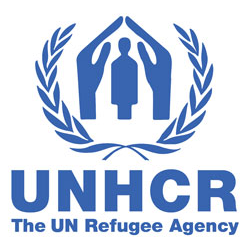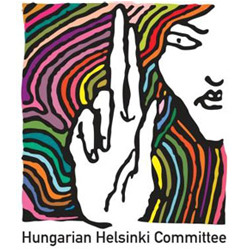Main Debates
- What are the potential arguments for and against the legality of processing requests for asylum in the EU while claimants remain outside EU territory?
- What practical problems could result from such a policy?
- What are the potential implications of making financial assistance to non-EU States conditional upon more restrictive border control?
Main Points
- External relations policy as tool to persuade non-EU States to carry out EU policies
- Potential future prospects for external processing of asylum applications
EU Documents
- Communication from the Commission to the European Parliament, the Council, the European Economic and Social Committee and the Committee of the Regions – A Common Immigration Policy for Europe: Principles, Actions and Tools, COM (2008) 359, 17 June 2008.
- Communication from the Commission to the Council and the European Parliament on Regional Protection Programmes, COM (2005) 388, 1 September 2005.
- Communication from the Commission to the Council the European Parliament, the European Economic and Social Committee and the Committee of the Regions. ‘Migration and Development: Some Concrete Orientations’ COM (2005) 390.
- Communication from the Commission to the Council and the European Parliament on the managed entry in the EU of persons in need of international protection and the enhancement of the protection capacity of the regions of origin ‘Improving access to durable solutions’, COM (2004) 410, 4 June 2004.
UNHCR Document
- UNHCR, ‘UNHCR Observations on the Communication from the European Commission to the Council and the European Parliament on Regional Protection Programmes’, [COM (2005) 388 final, 1 September 2005.
Readings
Core
- M. Garlick & J. Kumin, ‘Seeking Asylum in the EU: Disentangling Refugee Protection from Migration Control’, in B. Martenczuk and S. van Thiel (eds), Justice, Liberty and Security: New challenges for EU External Relations’, (Brussels: VUB Press, 2008).
- B. Vandvik, ‘Extraterritorial Border Controls and Responsibility to Protect: A View from ECRE’, 26 September 2008.
- C. Levy, ‘Refugees, Europe, Camps/State of Exception: “Into The Zone”, the European Union and Extraterritorial Processing of Migrants, Refugees, and Asylum-seekers (Theories and Practice)’, Refugee Survey Quarterly, vol. 29, no. 1 (2010), pp. 92-119.
- Maarten den Heijer, Europe and Extraterritorial Asylum (Hart Publishing, 2012), ch 5, pp. 165-208.
Extended
- Garlick, M.V., 'EU “Regional Protection Programmes”: development and prospects', in M. Maes, M-C. Foblets and P. de Bruycker, (eds), External Dimensions of EU Migration Law and Policy (Brussels: Bruylant, 2011).
- K. De Vries,‘An Assessment of “Protection in Regions of Origin” in Relation to European Asylum Law’, European Journal of Migration and Law, vol. 9 (2007), pp. 83–103.
- A. Baldaccini, ‘Extraterritorial Border Controls in the EU: The Role of Frontex in Operations at Sea’, in B. Ryan and V. Mitsilegas, 'Extraterritorial Immigration Control - Legal Challenges', (Leiden/Boston: Martinus Nijhoff Publishers, 2010), pp. 229-255.
- E. Brouwer, ‘Extraterritorial Migration Control and Human Rights: Preserving the Responsibility of the EU and its Member States’ in B. Ryan and V. Mitsilegas, 'Extraterritorial Immigration Control - Legal Challenges', (Leiden/Boston: Martinus Nijhoff Publishers, 2010), pp. 199-228.
- S. Peers, ‘EU Migration Law and Association Agreements’, in B. Martenczuk and S. van Thiel, Justice, Liberty and Security: New Challenges for EU External Relations (Brussels: VUB Press, 2008).
- M. Garlick, ‘The EU Discussions on Extraterritorial Processing: Solution or Conundrum?’, International Journal of Refugee Law, vol. 18 (September/December 2006), pp. 601–629.
- M. Gil-Bazo, ‘The Practice of Mediterranean States in the Context of the European Union’s Justice and Home Affairs External Dimension. The Safe Third Country Concept Revisited’, International Journal of Refugee Law, vol. 18 (September/December 2006), pp. 571–600.
- A. Klug & T. Houve, ‘The Concept of State Jurisdiction and the Applicability of the Non-Refoulement Principle to Extraterritorial Interception Measures’, in B. Ryan & V. Mitsilegas (eds), 'Extraterritorial Immigration Control - Legal Challenges', (Nijmegen: Martinus Nijhoff Publishers, 2010), pp. 69–102.
- S. Kneebone, C. McDowell, and G. Morrell, ‘A Mediterranean Solution? Chances of Success’, International Journal of Refugee Law, vol. 18 (2006), pp. 492–508.
- O. Lynskey, ‘Complementing and Completing the Common European Asylum System: A Legal Analysis of the Emerging Extraterritorial Elements of EU Refugee Protection Policy’, European Law Review, vol. 31, no. 2 (2006), pp. 230–250.
- G. Noll, ‘Visions of the Exceptional: Legal and Theoretical Issues Raised by Transit Processing Centres and Protection Zones’, European Journal of Migration and Law, vol. 5 (2003), pp. 303–341.
Editor’s Note
Extraterritorial immigration control refers inter alia to the system of immigration liaison officers used for some time by EU Member States which post officials from their border services in other countries, to reinforce checks and controls on entry to their territory from the point of departure. In addition, recent years have seen several debates about the notion of ’extraterritorial processing’, which would involve the possibility of obliging asylum seekers to request asylum of the EU from countries outside the Union, with the implication that this would be accompanied by restrictions on entry and/or rights to seek asylum within the EU.
See also Section VI.2.4.4.3 on Safe Third Country.






